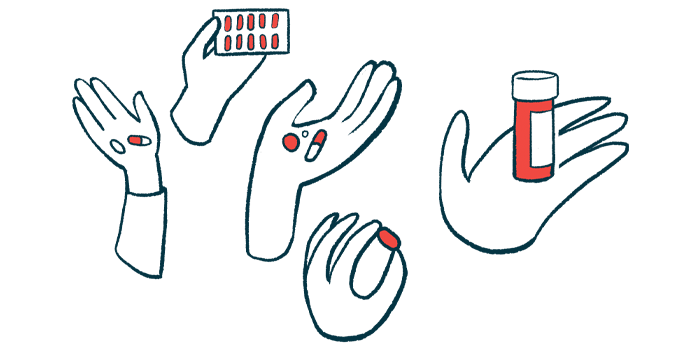Galafold long-term helps stabilize heart function in Fabry women
Benefits with approved therapy seen across disease severity levels in 2 trials

Long-term use of the approved oral therapy Galafold (migalastat) can help stabilize heart and kidney function in women and girls with Fabry disease across different disease severity levels, a new study from U.S. and European researchers reports.
Nearly three-quarters of the female participants in the two clinical trials and their extension studies used for the researchers’ analysis had multiple organ systems affected by Fabry. Many also had heart abnormalities, kidney dysfunction, or both. However, Galafold’s benefits held regardless of these factors, the data showed.
The researchers say their findings “[challenge] the perception that the burden of Fabry disease is low in females and demonstrates the benefits of [Galafold] treatment in this population.”
According to the team, “these data show that females with Fabry disease experience considerable disease severity … and support the long-term efficacy of [Galafold] for the treatment of” women and girls with the inherited condition.
The study, “Long-term efficacy of migalastat in females with Fabry disease,” was published in the Journal of Medical Genetics. While Galafold is approved only for adults with Fabry, these studies also enrolled girls ages 16 and older.
Galafold developer Amicus Therapeutics financially supported the research and collected and analyzed data. Two of the study’s eight authors are employed by the biotechnology company.
Fabry disease results from mutations in the GLA gene, which cause a deficiency or malfunction of the enzyme alpha-galactosidase A (alpha-Gal A). Alpha-Gal A typically helps cells break down fatty molecules, including globotriaosylceramide (Gb3). Without enough functional enzyme, Gb3 accumulates, building to toxic levels and impairing organ function.
Depending on a person’s specific genetic mutation, they may still produce the alpha-Gal A enzyme, but in an abnormal form. Galafold helps stabilize certain abnormal versions of alpha-Gal A, allowing the enzyme to better clear Gb3 and reduce symptoms. Only people with mutations that respond to this treatment, meaning they’re amenable, can benefit from it.
Researchers focus on Galafold effects in women, girls in study
Both women and men can have Fabry, but because the disease is X-linked — meaning the faulty gene is located on the X chromosome — women often have one normal copy of the gene that can partly compensate for the faulty one. As a result, there is a common perception that women tend to have milder symptoms than men.
“Females with Fabry disease often experience diagnostic delays and an underappreciated disease burden owing to their variable disease presentation and progression,” the researchers wrote.
In this study, the scientists aimed to describe organ involvement and responses to Galafold in girls and women with Fabry. To that end, the team looked at data from the FACETS (NCT00925301) and ATTRACT (NCT01218659) Phase 3 clinical trials, along with their respective open-label extension (OLE) studies (NCT01458119 and NCT02194985).
Across these studies, there were 60 female participants — women and girls aged 16 and older. The median age at the studies’ start was 47, and the participants had been diagnosed a median of six years earlier. All carried genetic mutations amenable to Galafold treatment.
In both studies, participants received 123 mg tablets of Galafold every other day. FACETS tested the medication against a placebo while ATTRACT compared it to an enzyme replacement therapy (ERT). ERT supplies a functional version of the alpha-Gal A enzyme, which can slow or prevent disease progression. Between the main trial period and the OLEs, the participants had a median of 5.1 years of exposure to Galafold.
70% of participants had at least 2 organs affected by Fabry
Most participants (70%) had at least two organs involved in their disease course. Those with multiple organ involvement tended to be older and had a longer exposure to Galafold. The kidneys, peripheral nervous system, and heart were most commonly affected.
About half of the participants showed at least one sign or symptom of heart problems, and 21.7% had signs of left ventricular hypertrophy, or LVH. LVH means the walls of the heart’s main pumping chamber have become thicker. This thickening, measured by the left ventricular mass index (LVMi), shows that the heart is working harder to pump blood through the body.
“LVH is a well-characterised predictor of Fabry disease mortality and morbidity,” the researchers noted. Morbidity refers to having a specific condition, while mortality refers to the number of deaths caused by that disorder.
Participants with and without LVH saw a stable rate of change in LVMi throughout the study, the data showed. Overall, LVMi was maintained or reduced, supporting the cardiac efficacy — the effectiveness of the treatment for heart issues — of Galafold.
Similarly, changes in kidney function stabilized regardless of where it was at the studies’ start, or baseline, in a subset of 47 participants who received at least two years of Galafold treatment. This was true in participants with and without multiorgan involvement.
Before participating in the clinical trials, 68% of female participants had experienced a Fabry-associated clinical event, known as a FACE. These events included certain severe kidney, heart, and cerebrovascular incidents. Galafold treatment “was associated with a low incidence of FACEs, even in patients with considerable disease severity, as shown by the degree of multiorgan involvement at baseline,” the researchers noted.
Collectively, these findings contradict the perception that the burden of disease is low in females and show that it is important to assess disease burden and treatment options in [women and girls] with Fabry disease.
During treatment, eight participants experienced a FACE.
Cardiac FACEs were the most common, followed by cerebrovascular events. No kidney-related events occurred. In a small, short-term comparison, up to 18 months, the Galafold group had a lower incidence rate of cardiac events compared with the ERT group. However, because this was a small analysis, the researchers noted they couldn’t draw definitive conclusions.
“Collectively, these findings contradict the perception that the burden of disease is low in females and show that it is important to assess disease burden and treatment options in females with Fabry disease,” the researchers wrote.
Despite the relatively small numbers of participants, the analyses in this study suggest Galafold may be effective for girls and women with amenable mutations across different Fabry severity levels, the researchers noted.
“These findings highlight the importance of assessing disease burden and treatment options in females with Fabry disease and support the long-term use and efficacy of [Galafold] for the treatment of females with amenable GLA variants, even in cases of multisystemic disease burden,” the researchers concluded.








